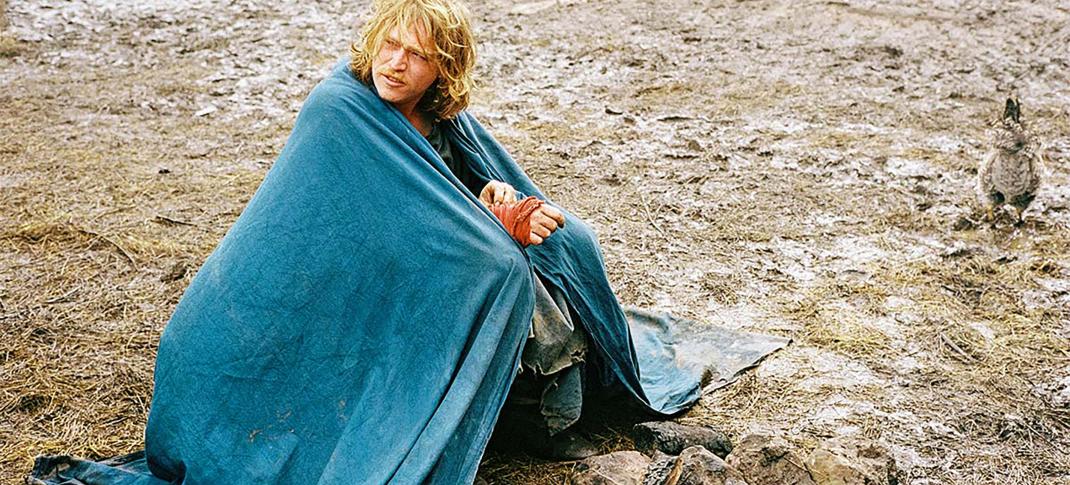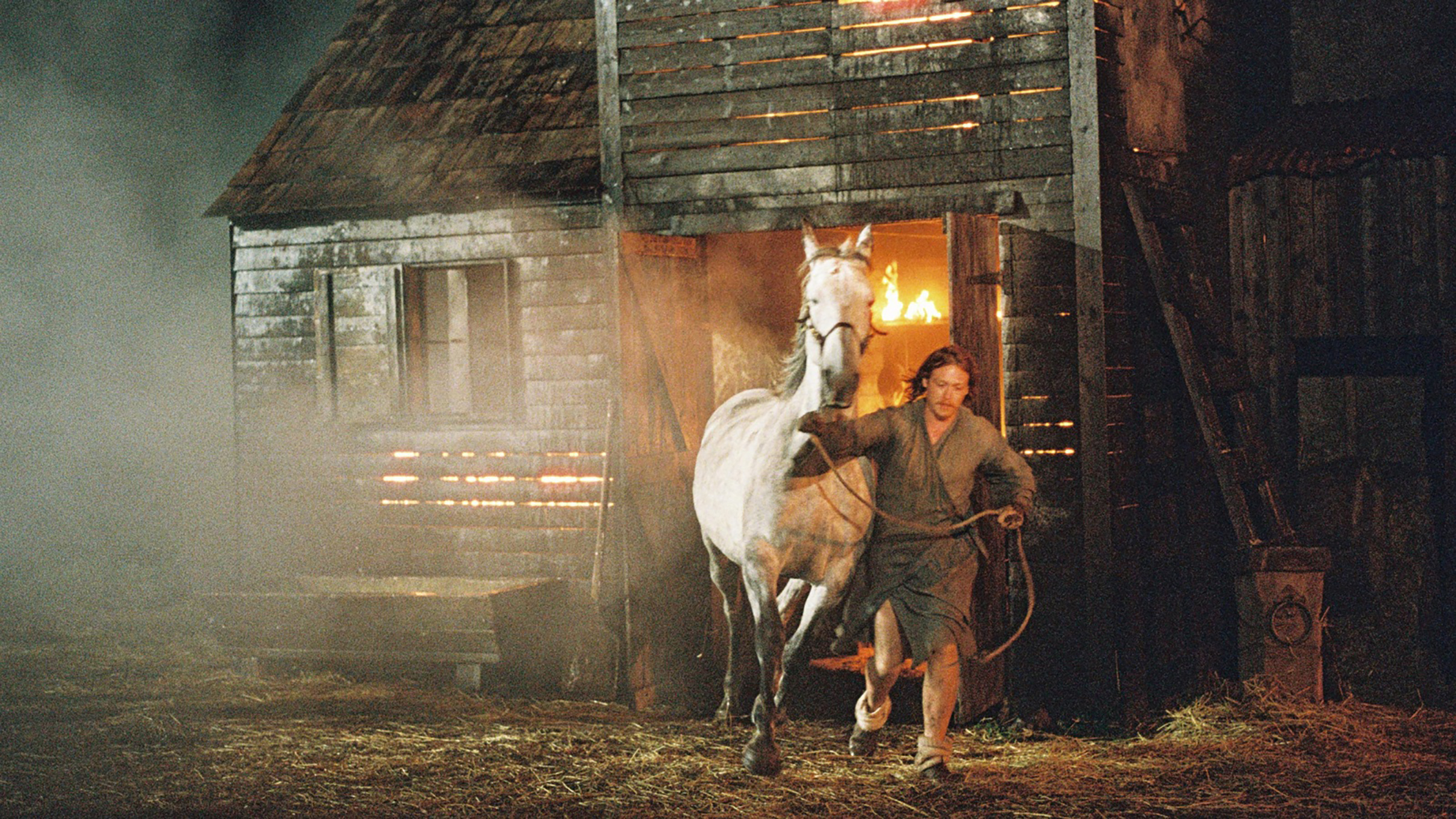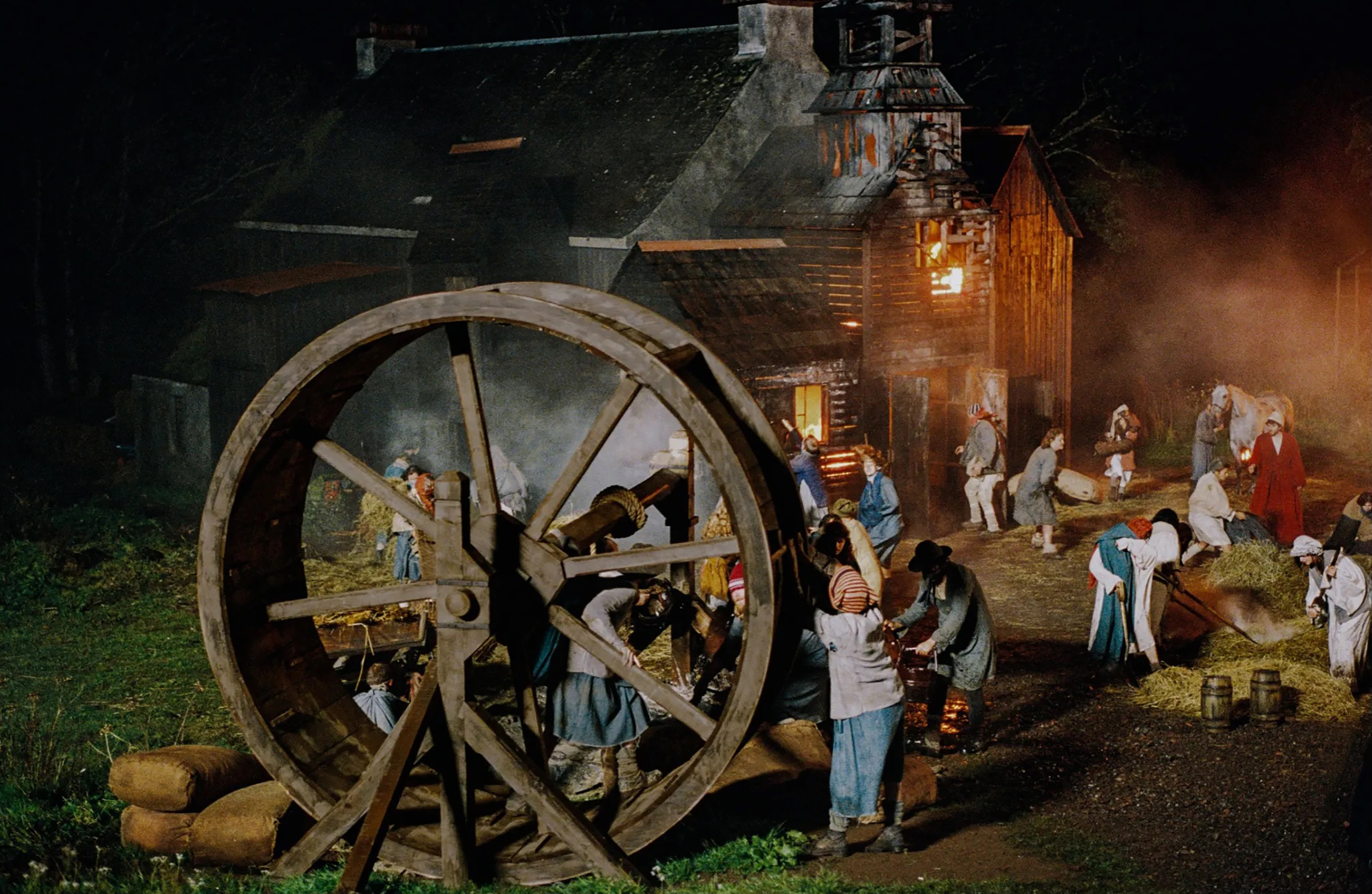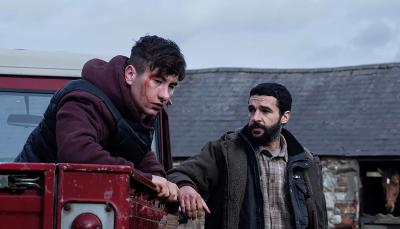'Harvest' Leaves an Impression Instead of an Impact

Caleb Landry Jones in 'Harvest'
Jaclyn Martinez/Harvest Film Limited
The winds of change have reached a remote coastal village, and, in the space of a week, all signs of life will be swallowed whole by the pressing urges of modernity. It’s a place too insignificant for the film Harvest to disclose where or when it is; the audience is cloistered together with a community on the verge of sublimating into a larger whole, but who will keep infighting until the displacement takes hold. The film, adapting the celebrated 2013 novel by Jim Crace, imagines an “enclosure”, the like of which were common in Britain’s Agricultural Revolution in the 17th century.
(The Scottish Highland and Lowland Clearances have extra resonance for Harvest’s story, as it was filmed in Oban, Scotland).
Master Kent (Henry Melling) is the fair but meek laird who owns the estate where the agrarian commune is dwelling, but the arrival of three unwanted drifters is immediately treated as a bad omen among the villagers – or maybe easy culprits to blame for a motiveless barn fire that happened just previously. The strangers – two men (Gary Maitland and Noor Dillan-Night) and one woman (Thalissa Teixeira) – are quickly scapegoated and strung up on the pillory in the hopes that their subjugation will soothe the unsettled atmosphere and bring back normalcy. But a different, more respectable arrival soon attracts the ire of the suspicious village folk – a Black cartographer, Quill (Arinzé Kene) who has been hired to create a detailed, up-to-date map of Kent’s estate.
It’s not immediately apparent to the villagers, but the sudden intrusion of modern charts and apparatus commissioned by rich landowners do not historically bode good tidings for isolated agricultural communities.
Much of Harvest’s social disintegration is filtered through the curious, shamanic eyes of Walter Thirsk (Caleb Landry Jones, marking another thickly accented performance after the biographical Australian film Nitram). Thirsk was born in a town (where he was childhood friends with Master Kent) and used to be married to a local woman before her premature death. This charged history has had an unusual, seismic effect on Thirsk, who roams the windy grass dunes outside the village settlements with a liberated, lively spirit and the occasional consumption of tree bark.
Amongst his kinsfolk, he speaks in low tones, communicating mainly with round, wet eyes – a primal state of timorousness and instinct that marks him out from people like his recurring paramour Kitty Gosse (Rosy McEwen) or the impulsive young arsonist Brooker Higgs (Stephen McMillan). Thirsk is instructed to show Quill around Kent’s estate, and he comes alive in the mapmaker’s company, delighted to highlight his favorite spots and folklore with someone who might understand their preciousness. Jones’s performance is twitchy, stammered, and flighty, but in his scenes with Kene, we see his open-hearted, learned side as he gels with another outsider who feels out of place on the land.
Harvest is helmed by Greek producer-turned-director Athina Rachel Tsangari (who co-wrote the screenplay with Joslyn Barnes). With cinematographer Sean Price Williams (Good One), Tsangari gives her English-language debut an intentional, expressionistic visual style, complete with speckled film print and aching, gold-hued natural light whenever possible. The way the film moves and breathes feels fused with the off-kilter, almost enhanced view of the world that Thirsk has – his solitary ramblings bookend the film. Tsangari and Williams’ camera finds joy in watching the naturalist loner survey his empty kingdom.
Harvest shows more empathy to Thirsk than any other character, especially after Kent starts to cave to the encroaching demands of his profit-and-progress-driven cousin Jordan (Frank Dillane) and the throng of villagers accusing Quill of bringing them ill will. These sentiments are charged with anti-Blackness but not articulated as such.
For an hour, all the patience and texture of Harvest adds to the strange but compelling story, but once we push into the second half (the film, while strong, is an egregious 133 minutes long), the confident grip that Tsangari has on Crace’s story starts to slacken. The treatment of capital superseding rural life and the way then stubborn dwellers blame the wrong people for it climaxes in direct, grisly plot beats that tread too close to didacticism – a more restrained approach to the scripting and editing would have helped Harvest’s evocative performances and dazzling images to sing much better.
The most significant threads – how race plays into outsider status; how living on the edge of a traditional community plays with one’s perception of gender – fail to develop into any concrete theming, meaning the deeper shades to Thirsk, Quill, and the stranger woman (named “Mistress Beldam”) don’t rise above artful (or, in some cases, tiresome) provocation. Harvest leaves us with an impression of a radical visual interpretation of a substantial text but needs to more finely deconstruct its source material to deliver a genuinely cinematic treatise on reckless, unfeeling modernity.
Harvest is currently playing in limited release in the U.S. and can be streamed on Fandango Now.






